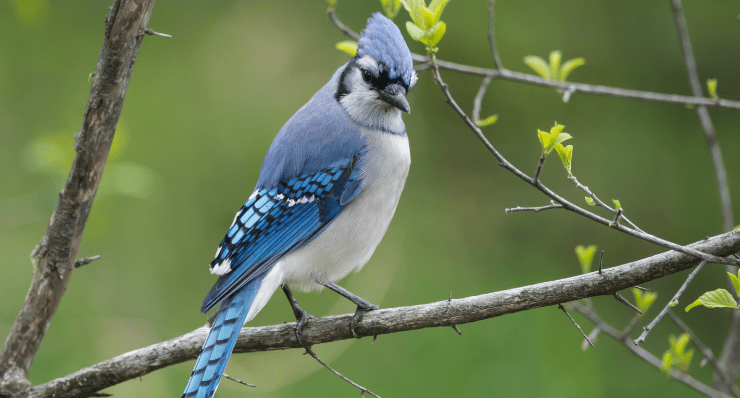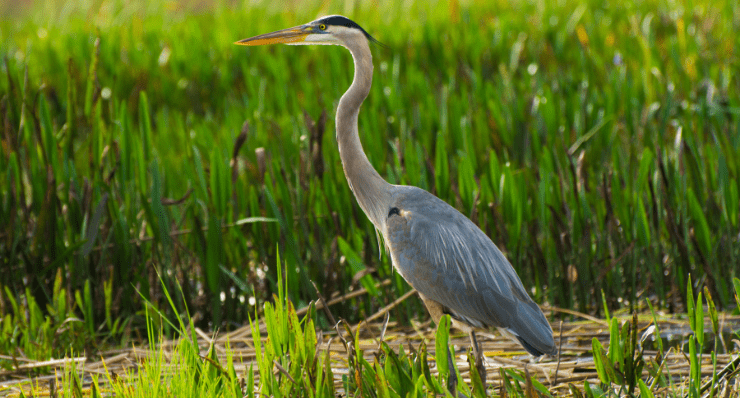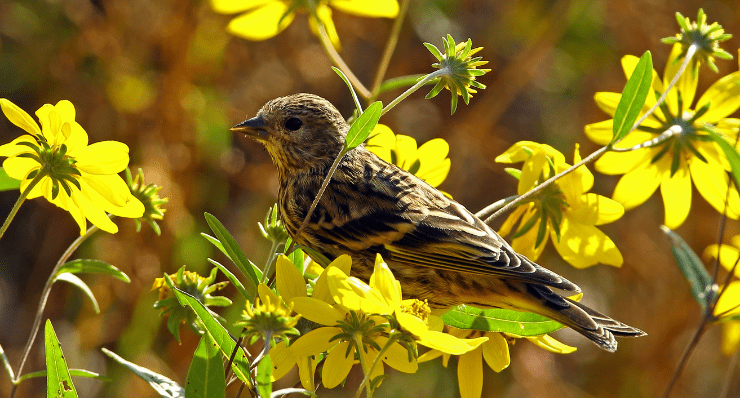CHECK OUT OUR VACATION RENTAL SPECIALS
 VIEW SPECIALS
VIEW SPECIALS

Birding in Western North Carolina attracts tourists from around the country each year. Many birders, with binoculars ready to snap up in position, flock to the region to witness the annual migration of birds or to see them up close.
The high elevation of the mountain region of Western North Carolina is the permanent home to hundreds of different species of birds. Migratory birds select the area for a layover to enjoy the abundance of trees of the state and national forests for a few days or weeks during the journey to warmer areas for the breeding season.
The North Carolina Birding Trail guide highlights the over 100 sites birders frequent from Georges State Park to DuPont State Park. In addition to those who enjoy birding as a hobby, others who have bird feeders in their yards also see a wide variety of birds on a daily basis including the common House Finch, Eastern Bluebird and sometimes the Red-Bellied Woodpecker. And on rare occasions, a Bald Eagle and the elusive Peregrine Falcons will swoop in for a visit.

Bird watching is a popular activity throughout the state, and particularly in Western North Carolina for bird species including the Tufted Titmouse or the Whet Owl. The North Carolina Birding Trail has hundreds of sites throughout the region for birders to zoom in for an up-close view of a Downy Woodpecker, or a Carolina Chickadee. And there are some great locations in the mountains of Western North Carolina to view a variety of birds on any birder’s wish list.
This historic trail is well-known to birders who make the trek to view a long list of bird species. Spring and fall are popular times to see birds during migration seasons. The Blue Ridge Mountains provide higher elevations for a number of species who also depend on the lush vegetation of nearby Spruce fir forests. The parkway begins in southwestern Virginia and travels south through North Carolina. The Highlands and Pisgah sections of the parkway are home to hundreds of different species of birds and are a bird watcher’s paradise.
A part of the Important Bird Area designated in North Carolina. The elevation of Highlands, located in the Plateau Region, attracts an array of migratory birds used to high altitudes.
Located near Brevard, the forest is one of the top destinations for birdwatching in the state. Here it’s common to see Eastern Bluebirds or Carolina Chickadees to name a few.
The acres of public gardens located in the Pisgah National Forest host a number of birds during their migration journey each year. Meditative walks are hosted throughout the year and are a great time to see a variety of birds in the Arboretum.
Listen for beautiful melodies as a variety of birds fly in for a concert at Mingo Falls, especially during the breeding season. The surrounding forest attracts hummingbirds along with the Pileated Woodpecker, Wood Thrush, Louisiana Waterthrush and Scarlet Tanager.
The overall park is home to over 100 different species of birds. However, approximately 80 birds migrate annually to the local region of the Great Smoky Mountains National Park.
The North Carolina mountains are home to approximately 470 species of birds. Several birds are native to the state and can be spotted year-round. While many can be found throughout the state, a select few are only found in the Western North Carolina.

Birds for the most part are early risers and can be heard chirping at dawn to announce the arrival of a new day. The quiet start of the day, as the sun rises is often a great time to catch award-winning views of birds in their natural patterns. Whether it’s feeding their young, tidying up the nest, or just enjoying the rays of the sun in the gentle breeze, the binoculars of bird watchers can see it all.
However, if you miss the morning hours, all is not lost. There is plenty of action to spy on during the course of the day depending on the location, bird species as well as the time of year. Although the migration seasons may differ, birders can follow the action based on the travel pattern and who may be in the area.
In addition, the evening is also another active time for birding, usually close to dusk. However, several birds like owls are more active after dark. Make plans to be in place at dusk to see which birds take a starring role.
The National Parks Service offers birding tips for beginners that highlight the best time of day and also the time of year to get the most from each experience.
Bird watchers come from all walks of life, ranging from novice to experts, with the common goal of spending time getting a close-up view of birds in their natural settings. It is a pretty laid-back hobby, but birding is strategic and attention should be given to ensuring to have the right gear and accessories on each expedition.
One of the first things bird watchers will need is a good pair of binoculars. Although you can see birds perched short distances away, it is often the view through the lens of binoculars that brings it up close to admire the colors of feathers, the beak or other features. It can also be rewarding to watch adults feed the babies or catch a mating snuggle.
In addition to binoculars, a few other items all birders should have include:
Network with other birders to get advice about locations to view birds in the area, equipment recommendations and a wealth of other information.
In North Carolina as the hobby of birding has become more popular in the United States, the need to have rules in place becomes increasingly more important to protect the birds and their habitat. The state’s birding ethics are modeled after those of the American Birding Association. Although each state may add something to the list of birding ethics, most share the basics outlined by the ABA.
The North Carolina birding ethics include:
The ethics rules are in place to make sure all birders are able to enjoy the hobby and check off the list of birds to view. In addition, the ethics are to be followed so the area is not damaged and birds are not disturbed in their natural setting and the ecosystem is interrupted. In general, birders should remember it’s about the overall safety of the birds and their ability to thrive rather than the convenience of watching them.

Since vacation time is all about enjoying some time away, why not include quality time on your hobbies, especially if it involves being outside. We’re surrounded by nature here and everyone wants to experience the natural beauty of the region.
Planning to spend time in Western North Carolina puts visitors in the hub of a lot of great birding sites to view native birds along with a few others common to the region depending on the season. Connect with the Carolina Bird Club or the National Audubon Society of North Carolina to learn more about birding in the state.
Many of our vacation rental homes in Western North Carolina have great balconies that provide a panoramic view for birding and one of two may drop in close for a visit while enjoying a quick snack. Get some great tips about vacationing in Western North Carolina while speaking to a talented Landmark Real Estate broker. Our brokers live in the region and can point out additional birding suggestions or which vacation rental homes provide great views. Contact Landmark Vacation Rentals today at (877) 926-1780 or browse our portfolio of properties in Western North Carolina.
0 COMMENTS